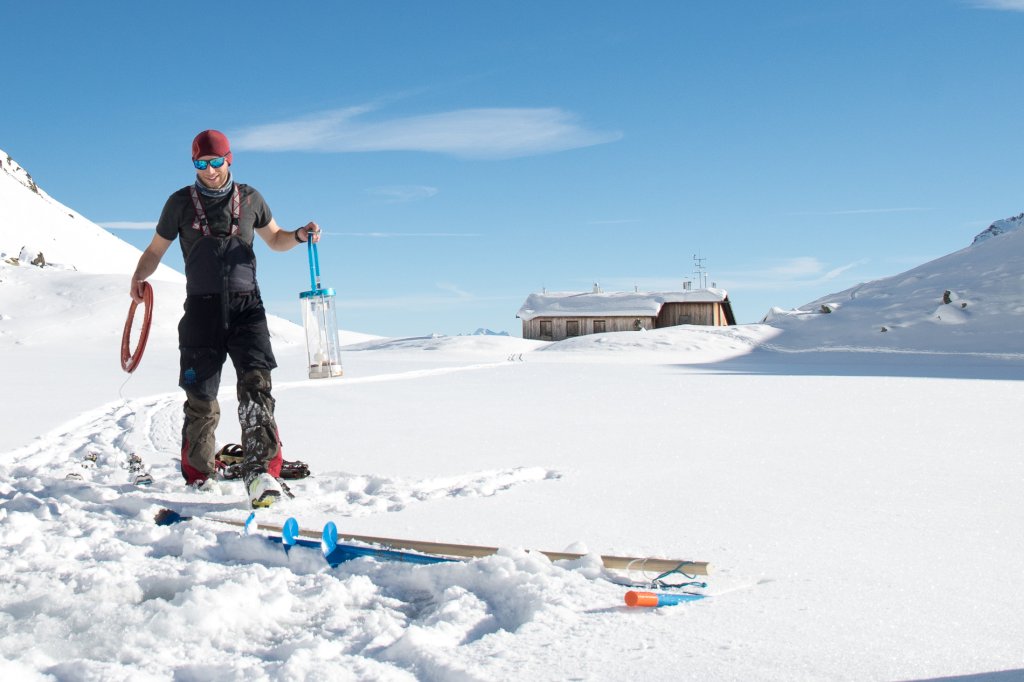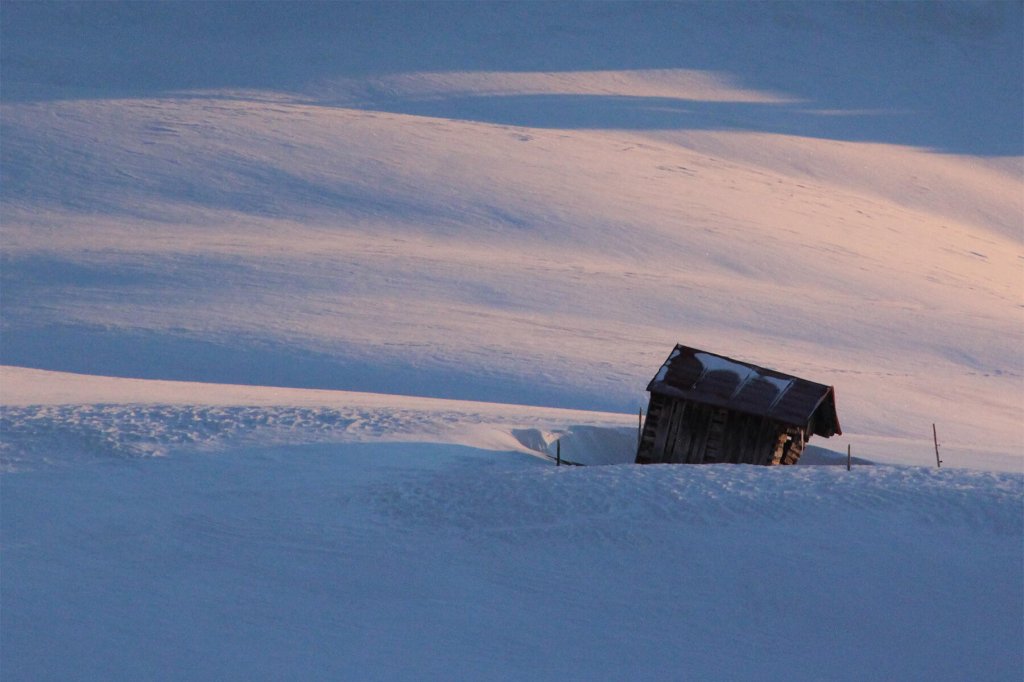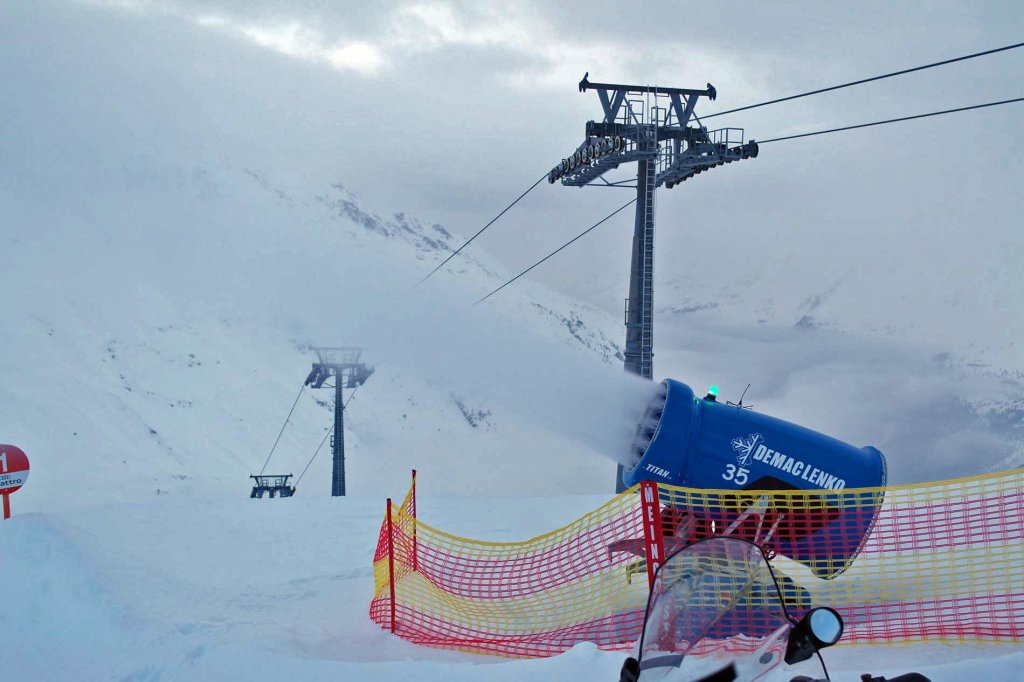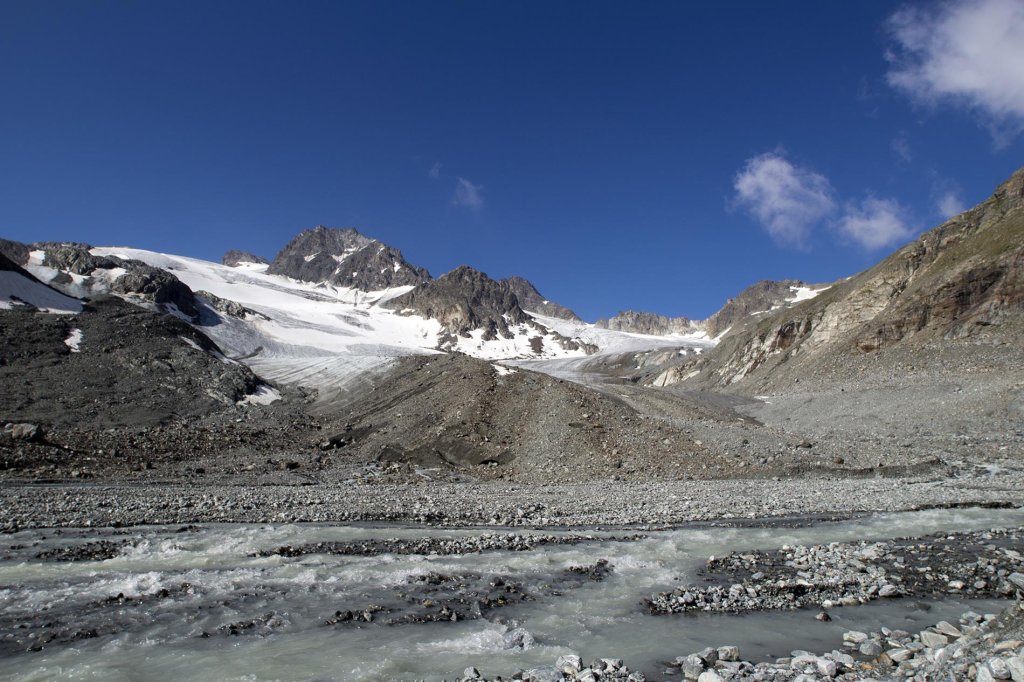Can biology also play a role here as a specialist field?
Glacial melt is defined, among other things, by how dark a surface is. More energy can be absorbed on dark surfaces. Biology plays a key role here, which has been researched far too little to date. It is about the so-called bio-albedo. This means that organisms on the surface of the ice can actively darken it. This leads to an increase in glacier melting and this additional melting leads to increased nutrient input. This allows the organisms that cause the darkening to reproduce even better. We know from Greenland, for example, that these so-called ice algae cause 10-13 percent of the total melt. The warmer it is and the shorter the snow cover is, the more these algae can develop. This makes you realize once again that a glacier is not a dead habitat, but an active ecosystem.
One symptom to curb glacier melt, which many of us are already familiar with, is covering the glaciers with tarpaulins in summer. However, together with other scientists, you have discovered that this is probably not the best solution after all. Why not?
The glaciers are only covered in ski resorts or regions used by tourists, and these measures have major local benefits as they can save up to two meters of ice per year. If we add that up over ten years, that's quite a difference in height of snow and ice that can be saved. Tourists like to call it glacier protection, but it's actually a method of deriving economic benefit from the glacier. In our opinion, it is not glacier protection as such, because these covers have negative effects.
They are made of polypropylene, for example, which is a plastic and consists of many fibers, similar to a fleece. The fibers are exposed on the glacier because there are extreme UV radiation, temperature differences and wind and the materials are not designed for this environment. When the fleeces are retrieved, or even when they are laid out, plastic fibers are emitted. These fibers can then spread in a sensitive ecosystem such as a glacier and ultimately reach neighboring ecosystems via the glacier streams.
Figuratively, you can imagine these fibers like a plate of spaghetti bolognese. The spaghetti is the individual plastic fibers and the sauce is the many chemical substances that are necessary for the production of the fibers. Sometimes there are hundreds to thousands of different chemicals in such plastic products. This leads to two problems with the covers: On the one hand the plastic emission itself and on the other hand the emission of chemicals.
After our first study in 2016, however, the manufacturer of the covers, for example, has already reacted and has been able to reduce the amount of lubricant required for the production of the nonwovens to ten percent. It was great to see that our work had a direct impact on the industry and that a big step had already been taken.
Most of us are familiar with the microplastic problem from microplastic particles in cosmetics or from the remnants of fleece sweaters in the washing machine, which can then accumulate in our food chain via the water cycle. Will we soon be finding the microplastics from the geotextiles of glacier tarpaulins on our plates too? To be honest, we don't yet know exactly how far the fibers spread. We have indeed identified fibers in a stream below a covered ski slope, sometimes quite a lot of them. However, this again depends on many variables, from the flow velocity to the morphology, i.e. the shape and structure of the stream bed, etc. However, we are only just starting our research to be able to really quantify how much is being introduced into the streams.
What other consequences can these particles have for the environment? For example, do they also have a direct negative impact on the glaciers themselves?
The glacier is a sensitive ecosystem and there are also specially adapted microorganisms that live in the glacier and on the glacier. The influence on the glacier is also due to the input of particles into the glacial stream. The glacial stream is also a very complex system, on the one hand there are microorganisms, but on the other hand there are also insects that live there. The presence of micro- or macroplastics, for example, can interfere with the food intake of these insects - either it prevents them from feeding or it is mistaken for food and ingested. Subsequently, this can mean that these insects are eaten by birds, etc. Our nature has so many different dials and if you tweak one, you don't know what it will do to the next one.
























